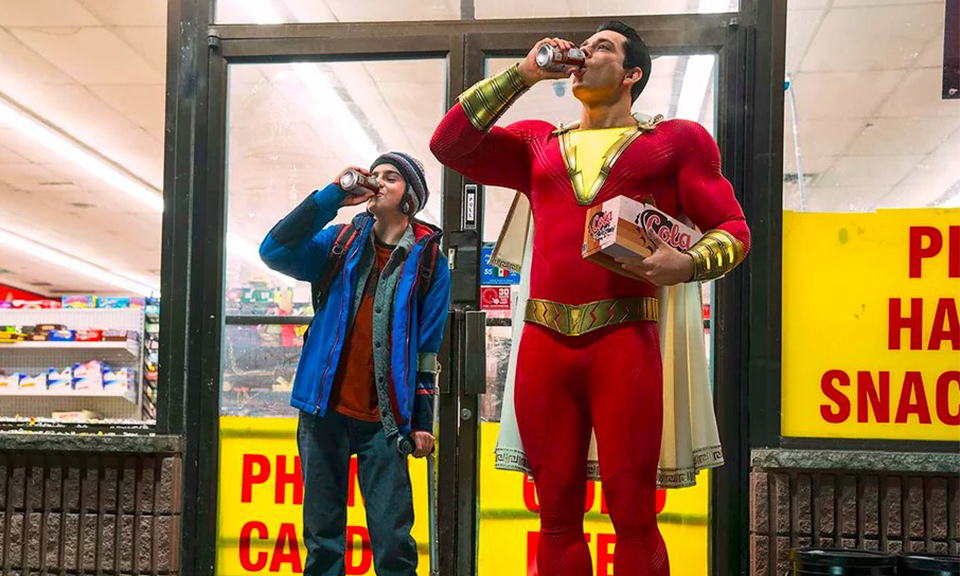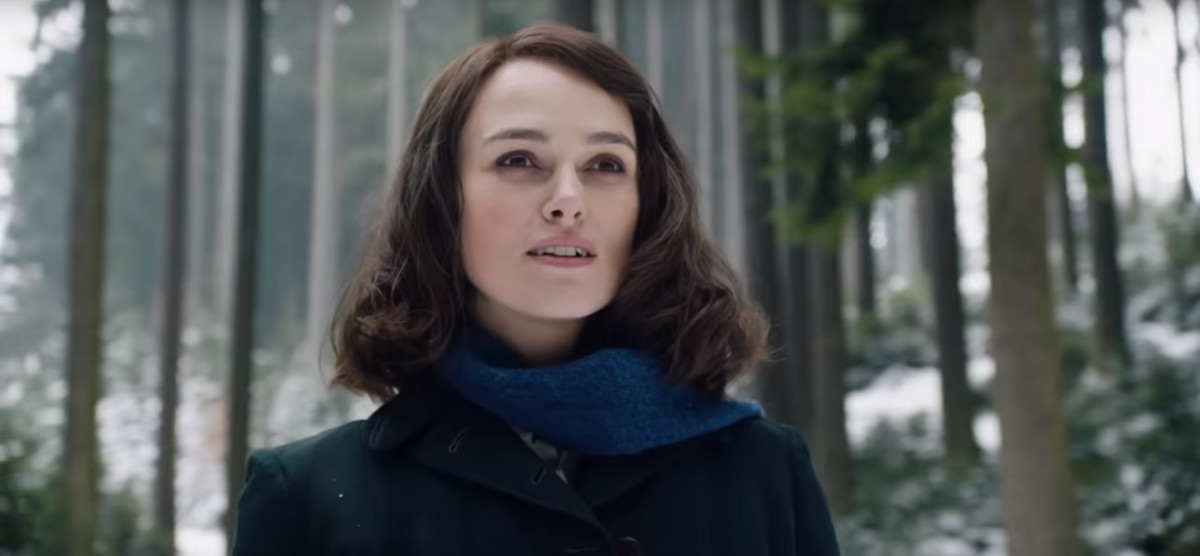Lesbians in horror have come a long way since Jesus DeFranco’s bloodthirsty nymphettes. In fact, we are now at the glorious point in history in which story leads can be lesbians for no particular reason—their sexual orientation not a metaphor for anything at all. They’re just characters. Nice!
There are so many great options that we had to leave many off. What were we looking for? Main characters whose sexuality is not showcased simply for titillation or as a twisted mark of the sinister. That doesn’t mean we’ve abandoned the villain, but if you’re looking for hot girl-on-girl action, well, yes, we have a bit of that, too, but who wouldn’t make out with Catherine Deneuve?
5. The Hunger (1983)
Director Tony Scott’s seductive vampire love story has a little bit of everything: slaughter, girl-on-girl action, ’80s synth/goth tunage, David Bowie. What more can you ask?
Actually the film’s kind of a sultry, dreamily erotic mess. Oh, the gauzy curtains. Catharine Deneuve is the old world vampire Miriam Blaylock—an inarguably awesome name for a vampire. David Bowie is her lover. But he suddenly begins aging, and she needs to find a replacement. Enter Susan Sarandon and her mullet as a medical specialist in unusual blood diseases and a fine actress who’s not above smooching other girls.
There are three reasons people will always watch this film: Bowie, Catherine Deneuve’s seduction of Susan Sarandon (classy!), and the great dark-wave Bauhaus number Bela Lugosi’s Dead. Together it’s a Goth Trifecta! And Goths do love them some vampires.
4. Thelma (2017)
We follow Thelma (Eili Harboe) through the uncomfortable, lonely first weeks of college we gather that her parents are very Christian and very protective.
Things could have gone all predictable and preachy from there, but co-writer/director Joachim Trier knows what you’re thinking and he plans to use it against you.
Thelma is a coming-of-age film at its cold, dark heart. The horror here lies in the destructive nature of trying to be something you are not, but here again, nothing in Thelma is as simple or cleanly cut as the beautiful framing and crystal clear camera work suggest.
Like Julia Ducournau’s magnificent coming-of-age horror Raw, Thelma dives into the issues swirling around post-adolescent freedoms and taboos in daring and insightful ways.
Thelma takes its time and lets its lead unveil a fully realized, deeply complex character full of contradictions—inconsistencies that make more sense as the mystery unravels. Though the result never terrifies, it offers an unsettling vision of self-discovery that’s simultaneously familiar and unique.
3. The Haunting (1963)
This may not seem like an obvious choice, but Theo (Claire Bloom) is a lesbian. And a great, badass character at that. That may not have been a widely held opinion when the great Shirley Jackson penned the novel in the fifties, or when the great Robert Wise directed the spooky and wonderful adaptation in 1963. But Mike Flanagan, director of the Netflix series based on the book, understood Jackson’s nuance and Wise’s subtlety and decided Theo would be out and proud. Good on ya, Flanagan.
In Wise’s original work, there is no overt mention of Theo’s sexuality, but there wouldn’t be, would there? It was 1963. Theodora is unmarried but refers to an “us” when discussing her home life. Her style, her confidence, her disinterest in being demure with the males, and the fact that Eleanor refers to her as “unnatural” all quietly make the case for us.
What’s great, though, is not just that a lead character is a lesbian, but that she’s a powerful and positive presence, and that she and Eleanor form a deep and supportive friendship. The Haunting (and Jackson’s magnificent novel) is about identity, and the fact that Theo is so very comfortable with hers is what makes this film an important addition to the list.
2. The Handmaiden (2016)
Director Park Chan-wook (Oldboy) mesmerizes again with this seductive story of a plot to defraud a Japanese heiress in the 1930s.
Weird is an excellent word to describe this film. Gorgeous and twisty with criss-crossing loyalties and deceptions, all filmed with such stunning elegance. Set in Korea, the film follows a young domestic in a sumptuous Japanese household. She’s to look after the beautiful heiress, a woman whose uncle is as perverse and creepy as he is wealthy.
Smart and wicked, stylish and full of wonderful twists, The Handmaiden is a masterwork of delicious indulgence.
1. Daughters of Darkness (1971)
Seduction, homoeroticism, drowsy lustfulness – this one has it all.
Countess Bathory—history’s female version of Dracula—checks into an all-but-abandoned seaside hotel. The only other guests, besides the Countess’s lover, Ilona (Andrea Rau), is a honeymooning couple.
Effortlessly aristocratic, Delphine Seyrig brings a tender coyness, a sadness to the infamous role of Bathory. Seyrig’s performance lends the villain a tragic loveliness that makes her the most endearing figure in the film. Everybody else feels mildly unpleasant, a sinister bunch who seem to be hiding things. The husband (John Karlen), in particular, is a suspicious figure, and a bit peculiar. Kind of a dick, really— and Bathory, for one, has no time for dicks.
Caring less for the victims than for the predator—not because she’s innocent or good, but because her weary elegance makes her seem vulnerable—gives the film a nice added dimension.
The accents are absurd. The outfits are glorious. The performances are compellingly, perversely good, and the shots are gorgeous. Indulge yourself.
https://www.youtube.com/watch?v=sFRuSbykaV0









